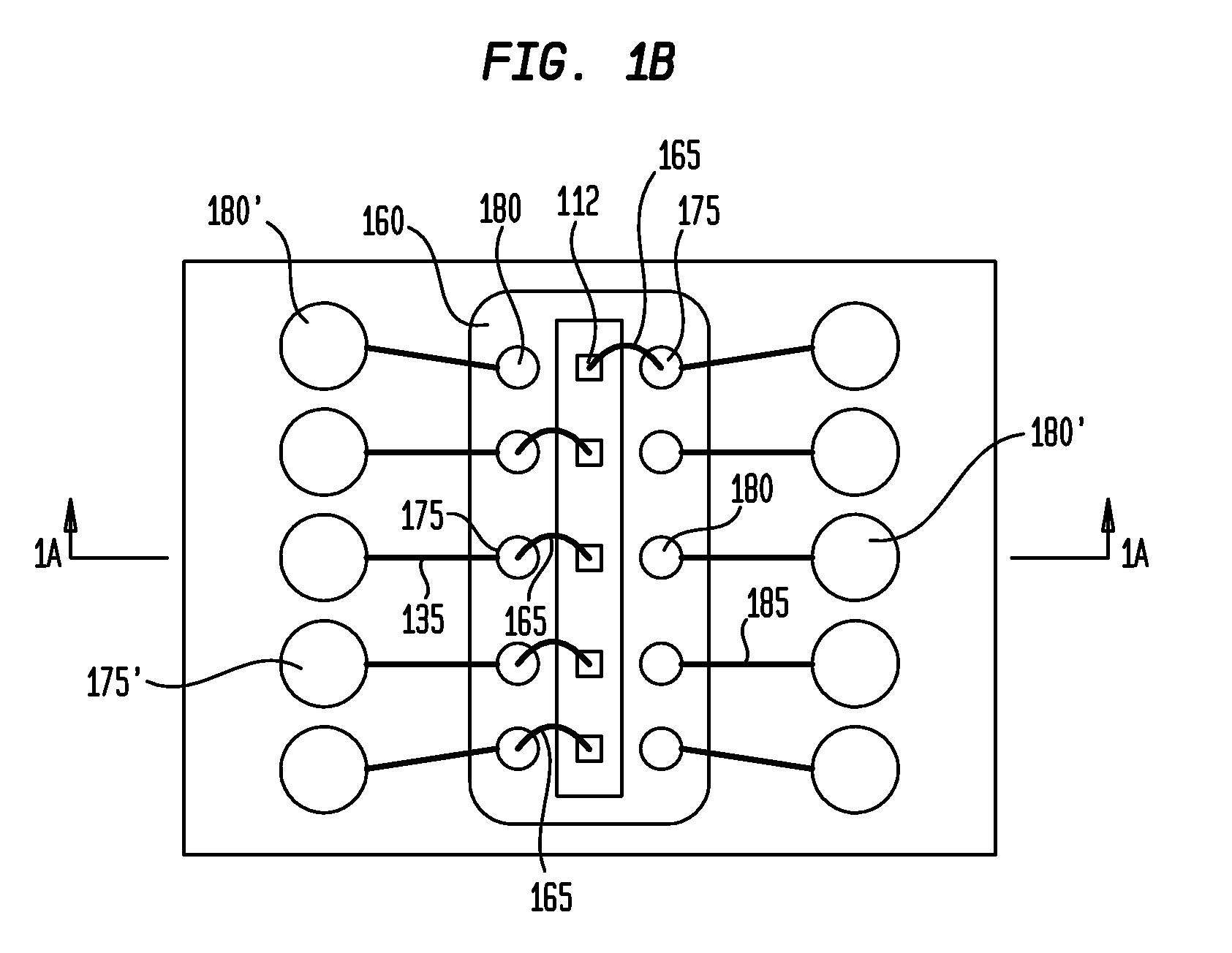Microelectronic assembly with impedance controlled wirebond and conductive reference element
a technology of impedance control and microelectronic assembly, which is applied in the direction of electrical apparatus, semiconductor devices, and semiconductor/solid-state device details, etc., can solve the problems of electrical impedance problems, unwanted radiation and detuning of lines, and wire-bonds generally are also subject to self-inductance, and can be subject to external noise, etc., to achieve easy consumption, increase the thickness of the insulative coating, and the effect of increasing the thickness of the insul
- Summary
- Abstract
- Description
- Claims
- Application Information
AI Technical Summary
Benefits of technology
Problems solved by technology
Method used
Image
Examples
Embodiment Construction
[0055]FIG. 1A shows a sectional view of an example microelectronic assembly 100, according to one embodiment. FIG. 1B is a corresponding plan view from above, in which the view in FIG. 1A is through section line 1A-1A of FIG. 1B. In this example, microelectronic assembly 100 includes a microelectronic device 110 conductively connected to interconnection element 130 through a wire bond 165. The microelectronic assembly 100 differs from conventional arrangements in that it includes a conductor 166 which is insulatively sheathed by an insulative (dielectric) coating 168. Beyond the dielectric coating 168, a conductive encapsulant 160 covers and at least substantially surrounds the wire bond 165. Thus, the conductive encapsulant 160 is disposed at an at least relatively uniform distance (which can be a uniform distance) from the internal conductor 166, such that the conductive encapsulant can act as a reference conductor in a transmission line that includes the central conductor 166 and...
PUM
 Login to View More
Login to View More Abstract
Description
Claims
Application Information
 Login to View More
Login to View More - R&D
- Intellectual Property
- Life Sciences
- Materials
- Tech Scout
- Unparalleled Data Quality
- Higher Quality Content
- 60% Fewer Hallucinations
Browse by: Latest US Patents, China's latest patents, Technical Efficacy Thesaurus, Application Domain, Technology Topic, Popular Technical Reports.
© 2025 PatSnap. All rights reserved.Legal|Privacy policy|Modern Slavery Act Transparency Statement|Sitemap|About US| Contact US: help@patsnap.com



